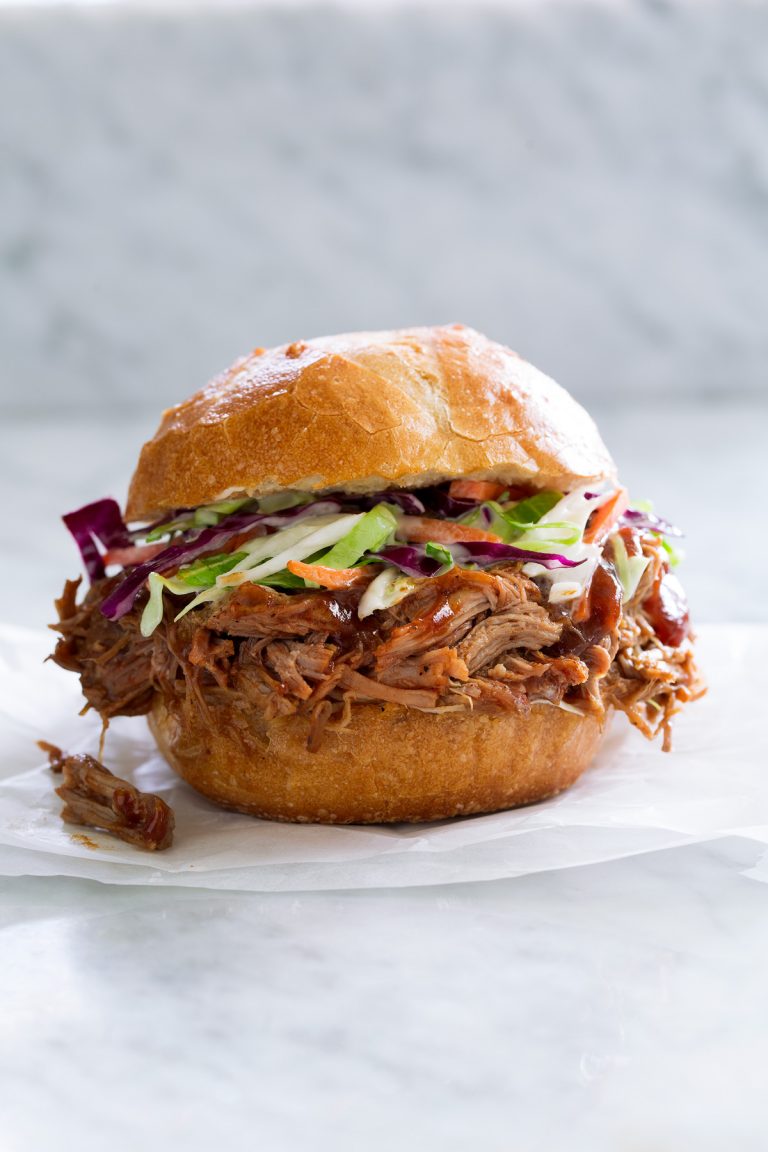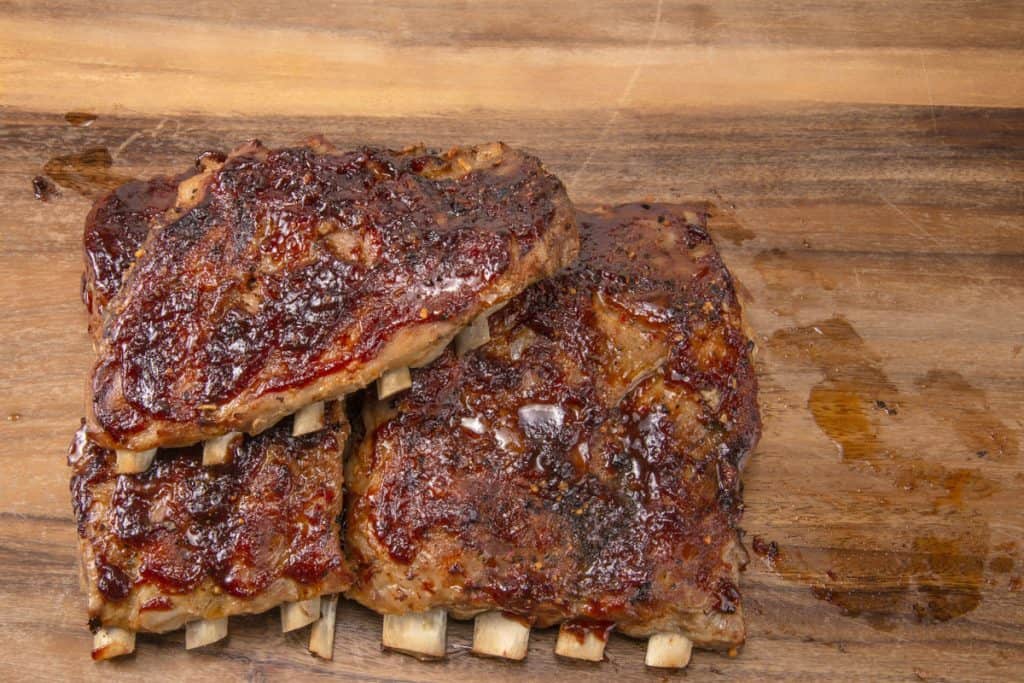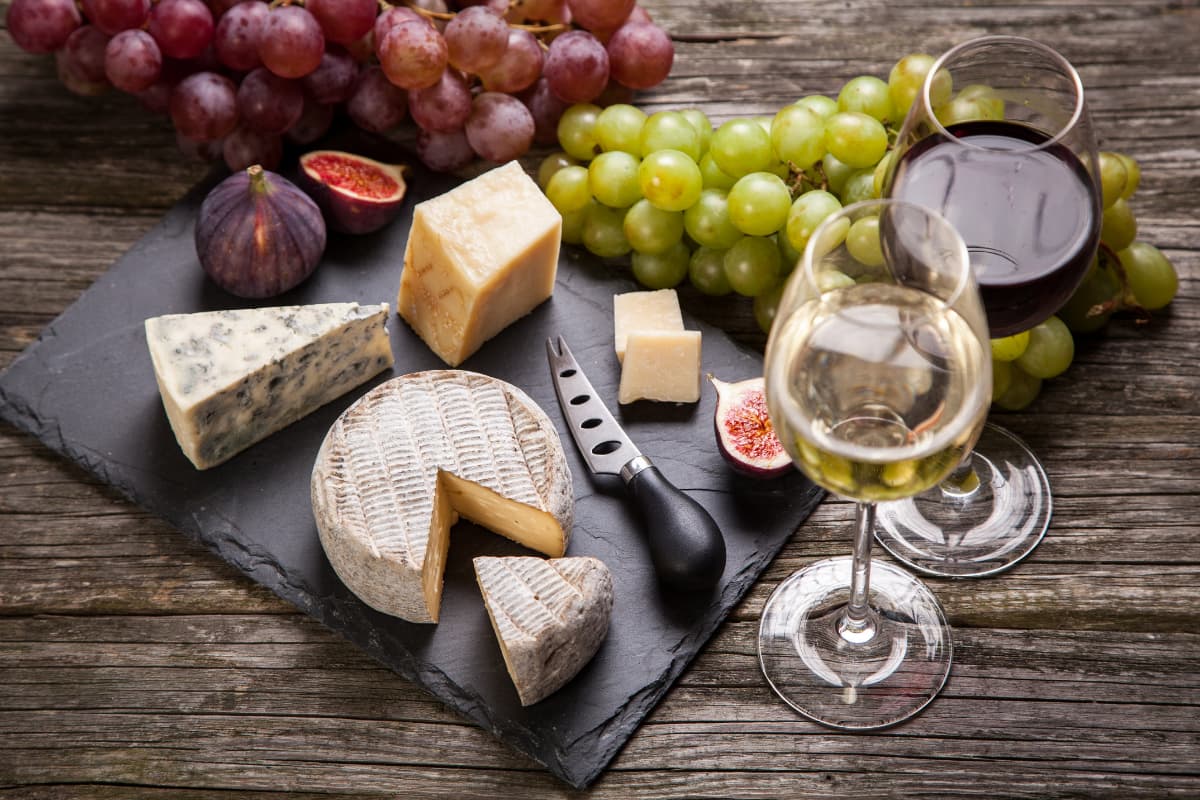Discover the mystery behind the delectable aroma of shawarma and how do spit-grilling the meat make it so delicious? Today, we embark on a journey to unravel the mysteries of this delectable dish. The shawarma spit-grilling process entails a...
Discover the mystery behind the delectable aroma of shawarma and how do spit-grilling the meat make it so delicious? Today, we embark on a journey to unravel the mysteries of this delectable dish.
The shawarma spit-grilling process entails a meticulously crafted vertical rotisserie, which layers seasoned meat over slow-releases, absorbing flavor and finishing with a perfect temperature. We imagine juicy slices of meat that are crispy outside and juicy inside, infused with traditional spices. This article discusses shawarma�s history, culinary techniques, and variations around the world, offering a comprehensive guide for both enthusiasts and those eager to learn how to recreate this Middle Eastern favorite in their own homes.
As we dive deeper into the process of building the shawarma tower, we�ll discover the secrets of slow and controlled cooking, as well as the cultural significance of shawarma as a communal experience. As part of this flavorful expedition, we�ll look at health and nutrition considerations, as well as share popular recipes and expert insights. This article will satisfy your curiosity and leave you with a new appreciation for spit-grilling, regardless of whether you are a seasoned shawarma enthusiast or a curious food lover. Let us take a closer look at shawarma and discover what makes it mouthwatering.
History of Shawarma
In tracing the compelling narrative of shawarma�s history, we embark on a gastronomic odyssey that transcends borders and spans centuries. Originating from the Middle East, shawarma has gracefully journeyed through various cultures, leaving an indelible mark on the global culinary landscape. Its roots, firmly planted in the Levant region, offer a fascinating glimpse into the evolution of a dish that has become a beloved international sensation.
The Birth of Shawarma
The inception of shawarma can be traced back to the 18th century in the Ottoman Empire, where vertical rotisseries became the canvas for this culinary masterpiece. Initially known as �kebap,� the method of layering marinated meat on a vertical spit not only served practical purposes but also laid the foundation for an iconic dish. As the Ottoman Empire crisscrossed cultural boundaries, so did the flavors of shawarma, finding homes in countries like Turkey, Greece, and beyond.
A Culinary Wanderlust
Shawarma�s journey through various cultures mirrors the intricate dance of spices and seasonings that characterize its preparation. From the aromatic streets of Beirut to the bustling markets of Istanbul, each locale has imparted its unique twist to the dish, creating a diverse tapestry of flavors. The Levantine tradition of slow-roasting meat on a vertical spit transcended geographical constraints, adapting and evolving as it encountered new culinary landscapes.
In Greece, shawarma took on the moniker �gyro,� becoming a street food sensation with its own Hellenic flair. The savory layers of shawarma reached the Indian subcontinent, where it metamorphosed into the beloved �shawarma roll,� marrying traditional spices with the Middle Eastern cooking technique. Across the Mediterranean, the Spanish embraced shawarma, infusing it with a touch of Iberian zest.The Evolution of Spit-Grilled Mastery
The evolution of the cooking technique for spit-grilled meat encapsulates a journey from necessity to culinary artistry. Initially born out of the need to preserve and cook meat efficiently, the vertical rotisserie transformed into a symbol of skilled craftsmanship. Over time, advancements in cooking technology and a relentless pursuit of flavor perfection refined the process, turning shawarma into a culinary spectacle.
The Contemporary Shawarma Renaissance
In the contemporary culinary landscape, shawarma has not merely survived; it has experienced a renaissance. The embrace of global palates, coupled with the rise of multicultural culinary fusion, has catapulted shawarma into the mainstream. Its journey from traditional markets to gourmet establishments showcases the dish�s adaptability, ensuring its relevance in a world where food serves as a universal language.
In essence, the history of shawarma is an epic tale of migration, adaptation, and flavor evolution. From its modest beginnings in the Ottoman Empire to gracing the plates of food enthusiasts worldwide, shawarma�s journey reflects the rich tapestry of human connection through the shared love of exceptional cuisine. As we savor the layers of history embedded in each succulent bite, we become part of a story that transcends time and place, celebrating the enduring legacy of shawarma as a global culinary icon.
The Art of Spit-Grilling
A. Anatomy of a Shawarma Spit
Shawarma�s enchanting journey from raw meat to succulent perfection begins with the intricate anatomy of the vertical rotisserie. This culinary marvel, often underappreciated, serves as the stage for the gastronomic performance that is shawarma. Picture a dynamic interplay of heat and meat, as layers of marinated goodness dance on the spit, slowly transforming into a masterpiece. The vertical rotisserie not only ensures even cooking but also allows the flavors to meld seamlessly, creating that distinctive taste shawarma enthusiasts crave.
B. Marination and Flavor Infusion
Marination is the soul of shawarma, elevating it from ordinary to extraordinary. The importance of this step cannot be overstated; it�s the alchemy that transforms raw meat into a flavor-packed delight. As the meat spins on the spit, the marinade�s rich blend of traditional spices and seasonings infuses every fiber, ensuring each bite is a symphony of tastes. The marriage of technique and tradition in shawarma marination is what sets this dish apart, making it an unrivaled culinary experience.
Cooking Process
A. Building the Shawarma Tower
To create the savory magic of shawarma, we begin by constructing the shawarma tower. This involves skillfully layering marinated meat on a vertical spit, ensuring each layer cooks uniformly. This tower-building process not only adds visual appeal but also allows the flavors to meld seamlessly, creating a culinary masterpiece.
B. Slow and Controlled Cooking
The essence of shawarma lies in the slow and controlled cooking process. The spit rotates slowly, allowing the meat to absorb smoky flavors while maintaining a perfect balance between a crispy exterior and a juicy interior. This meticulous cooking method is the secret behind shawarma�s irresistible taste and texture.
Culinary Techniques
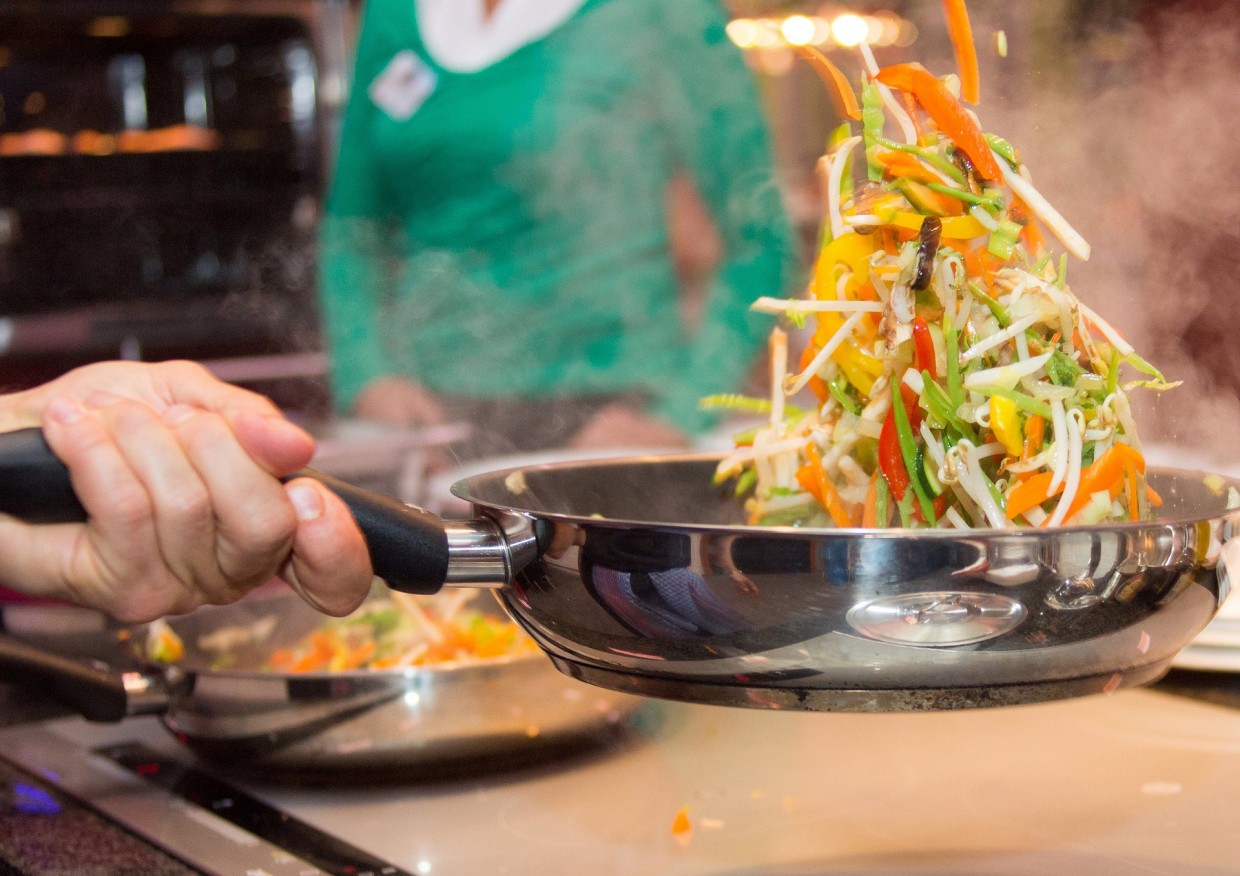
Photo by: chequamegonfoodcoop
A. Slicing and Serving
In the culinary realm of shawarma, precision is paramount even after cooking. Slicing the spit-grilled meat is an art form, resulting in visually appealing servings that delight both the eyes and taste buds. Shawarma offers diverse serving styles, from classic wraps to elegantly arranged platters, elevating the dining experience beyond a mere meal.
B. Garnishes and Accompaniments
Beyond the meticulous slicing, shawarma is complemented by a variety of garnishes and accompaniments. This includes a rich assortment of toppings and condiments that add flavor complexity, along with side dishes carefully chosen to enhance the overall shawarma experience.
Global Variations
In the diverse tapestry of culinary traditions, spit-grilled meat has woven itself into a multitude of global variations, each a testament to the rich interplay between cultural heritage and gastronomic innovation.
A. Regional Adaptations
**Middle East:** The birthplace of shawarma, Middle Eastern variations often feature lamb or chicken, seasoned with a blend of spices like cumin, coriander, and paprika. Served in flatbreads and accompanied by tahini or garlic sauce, it�s a street food sensation. **Mediterranean:** In the Mediterranean, particularly Greece, gyros take the spotlight. Typically made with pork or chicken, gyros are adorned with tomatoes, onions, and a cooling tzatziki sauce, encapsulating the essence of Greek flavors. **Latin America:** Regions like Mexico boast their version known as al pastor. Influenced by Lebanese immigrants, al pastor features marinated pork cooked on a vertical spit, served in tacos with pineapple and cilantro for a delightful blend of sweet and savory. **Asia:** Across Asia, variations abound. From Turkish d�ner kebabs to Indian shawarma, the spices may vary, but the method remains. Japan�s take involves the popular street food, yakitori, skewered and grilled over charcoal for a distinctly Japanese twist.B. Unique Flavors and Ingredients
Exploring the globe, one encounters an array of unique flavors and ingredients that distinguish each regional adaptation:
Spice Infusions: Whether it�s the aromatic spices of the Middle East or the chili-infused marinades of Latin America, spice is the common thread that ties these variations together, offering a symphony of flavors.
Marinades and Sauces: From the zesty chimichurri in Argentina to the yogurt-based marinades in India, the choice of marinades and accompanying sauces adds layers of complexity to the final dish, tantalizing taste buds with every bite.
Meat Selection: While lamb and chicken dominate in the Middle East, beef is the star in South American parrillas. Each region selects its meats based on local preferences, contributing to the distinctiveness of their spit-grilled creations.
Accompaniments: The choice of accompaniments varies widely, from the pickled turnips in Middle Eastern shawarma to the vibrant salsas of Mexico. These side elements not only provide contrast but also elevate the overall gastronomic experience.
As one delves into the global tapestry of spit-grilled meat, it becomes evident that each variation is a reflection of the cultural nuances and culinary prowess of the region it calls home. Whether enjoyed on the bustling streets of Istanbul or at a festive gathering in Mexico City, spit-grilled meat, in its myriad global forms, serves as a flavorful bridge connecting diverse cultures through the universal language of food.
Cultural Significance
In the bustling tapestry of global cultures, the savory aroma of shawarma wafts through the air, transcending its culinary roots to embody a profound cultural significance. This spit-grilled masterpiece has seamlessly woven itself into the fabric of societies, fostering social bonds and acting as a unifying force across diverse communities.
A. Culinary Tapestry of Unity
**Diverse Palates, One Shawarma:** At the heart of shawarma�s cultural importance lies its ability to cater to diverse palates. Whether nestled in the streets of Beirut or gracing the tables of New York, shawarma is a culinary chameleon, adapting its flavors to suit the unique tastes of each community. **Communal Dining Traditions:** The communal aspect of enjoying shawarma is deeply embedded in cultural dining traditions. Families, friends, and even strangers often gather around a shared platter, forging connections as they indulge in the sensory delight of spit-grilled perfection. **Celebratory Feasts:** Shawarma is not merely a dish; it�s a centerpiece of celebration. From Middle Eastern weddings to street festivals in Latin America, the presence of shawarma signifies joy, togetherness, and the communal spirit that defines cultural festivities. **Global Fusion:** As communities intertwine in an increasingly interconnected world, shawarma becomes a symbol of global fusion. It�s not uncommon to find unique variations inspired by local ingredients, reflecting the evolving cultural landscape where traditions coalesce.B. Bridging Culinary Traditions
In the rich tapestry of global gastronomy, shawarma emerges as a culinary bridge, connecting disparate traditions in a shared appreciation for spit-grilled excellence:
Cross-Cultural Influences: Shawarma�s journey across continents mirrors the cross-cultural influences that define modern societies. It seamlessly blends the ancient techniques of the Middle East with the evolving culinary preferences of diverse communities worldwide.
Social Cohesion: Sharing a shawarma meal transcends the act of eating; it fosters social cohesion. The experience of savoring perfectly grilled meat wrapped in flatbread becomes a shared memory, breaking down cultural barriers through the universal language of food.
Culinary Diplomacy: In diplomatic circles, shawarma has emerged as a symbol of culinary diplomacy. Leaders from different nations, gathered around a shawarma platter, find common ground, using gastronomy as a bridge to foster understanding and cooperation.
Community Integration: As immigrant communities introduce shawarma to new lands, it becomes a tool for community integration. Local residents, curious about the flavors of distant cultures, embrace shawarma, creating a harmonious blend that enriches the culinary landscape.
Health Considerations
Navigating the savory realm of shawarma, it�s crucial to unravel the nutritional nuances of spit-grilled meat while savoring this gastronomic delight. Beyond its tantalizing flavors, shawarma offers a canvas for a balanced and health-conscious culinary experience, ensuring that indulgence aligns with well-being.
A. Unveiling the Nutritional Tapestry
When delving into the nutritional aspects of spit-grilled shawarma, it�s essential to recognize the components that contribute to both its rich taste and potential health benefits:
Lean Proteins: At the core of shawarma lies lean meats, a robust source of protein essential for muscle health and overall well-being. The vertical spit-grilling method allows excess fats to drip away, leaving behind a protein-packed canvas.
Vitamins and Minerals: Shawarma�s diverse array of ingredients, from fresh vegetables to exotic spices, introduces a spectrum of vitamins and minerals. These micronutrients play a vital role in supporting various bodily functions, enhancing the nutritional profile of the dish.
Balanced Fats: While the vertical rotisserie aids in minimizing saturated fats, the addition of healthy fats, such as those from olive oil-based dressings, contributes to a well-rounded flavor profile and provides essential fatty acids.
B. Tips for a Wholesome Shawarma Experience
For those seeking a harmonious blend of flavor and health, adopting mindful practices ensures a satisfying shawarma experience without compromising well-being:
Whole Grain Wraps: Opting for whole grain wraps adds a fiber boost to your shawarma. Fiber aids digestion, promotes satiety, and contributes to a healthier gastrointestinal system.
Abundant Veggie Medley: Enhance the nutritional content by loading your shawarma with a colorful medley of vegetables. These not only add vitamins and minerals but also amplify the crunch and freshness of each bite.
Mindful Sauces: Exercise prudence in choosing sauces. Opt for yogurt-based or tahini dressings over mayonnaise-heavy options. These alternatives offer flavor without an excess of saturated fats.
Hydration Harmony: Complement your shawarma indulgence with hydrating choices like water or herbal teas. Staying well-hydrated aids digestion and ensures your body receives the necessary fluids.
Moderation is Key: Relish shawarma in moderation. While it delights the taste buds, savoring it as an occasional treat preserves its allure while aligning with a balanced and varied diet.
In conclusion, the health considerations surrounding spit-grilled shawarma extend beyond taste, encapsulating a mindful approach to nutrition. By understanding the nutritional tapestry and adopting thoughtful choices, one can revel in the savory experience while prioritizing overall well-being. So, let the vertical rotisserie spin, and embark on a shawarma journey that harmonizes flavor and health in every delectable bite.
Popular Shawarma Recipes
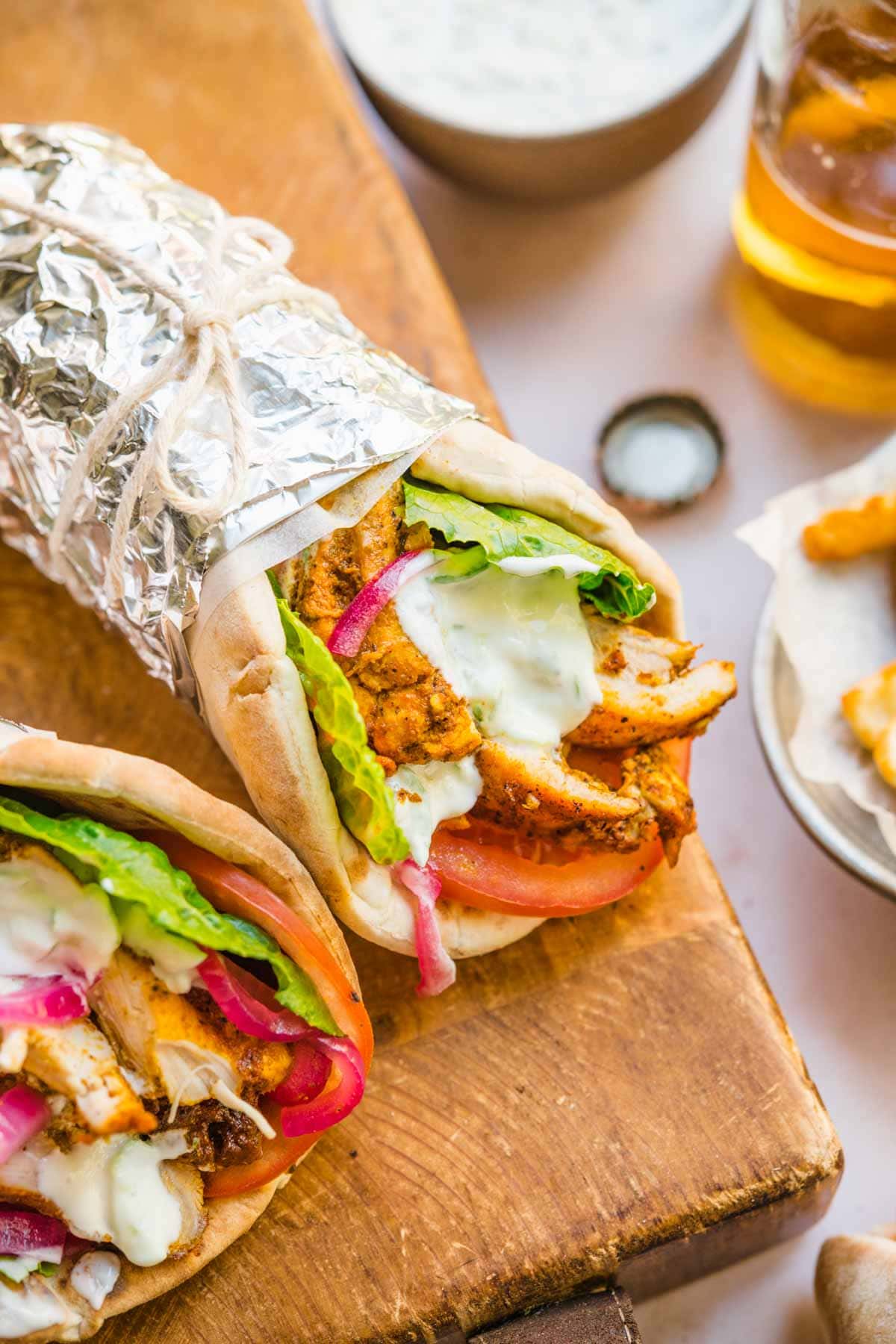
Image credit: https://dinnerthendessert.com
Embark on a culinary journey as we unravel the secrets of crafting tantalizing shawarma right in the heart of your kitchen. Elevating home-cooked meals to a gourmet experience, these popular shawarma recipes promise to encapsulate the essence of spit-grilled magic, inviting you to savor the aromas and flavors synonymous with this Middle Eastern delight.
A. Classic Chicken Shawarma
Crafting the iconic chicken shawarma at home is a gratifying endeavor, and here�s your step-by-step guide:
Marination Magic:
In a bowl, concoct a marinade with yogurt, olive oil, minced garlic, cumin, paprika, turmeric, and a squeeze of lemon juice. Coat thinly sliced chicken thighs generously with the marinade, ensuring each piece absorbs the flavorful amalgamation. Allow the marinated chicken to rest for at least 2 hours or, ideally, overnight for an intensified flavor infusion.Seared to Perfection:
Preheat your skillet or grill pan over medium-high heat. Sear the marinated chicken slices until golden brown and cooked through, emanating an aromatic symphony.Wrap It Right:
Warm your preferred flatbreads or pita on the skillet. Assemble the shawarma by placing the seared chicken, fresh vegetables, and a dollop of tahini sauce in the center of the warmed bread.Garnish and Serve:
Sprinkle with chopped parsley, a dash of sumac, and a drizzle of extra virgin olive oil for the finishing touch. Serve hot, embracing the harmonious marriage of textures and flavors.B. Succulent Lamb Shawarma
For aficionados of lamb, here�s a recipe that promises succulence and depth of flavor:
Flavor-Infused Lamb Marinade:
Mix together Greek yogurt, minced garlic, rosemary, ground coriander, and a pinch of cinnamon. Coat thinly sliced lamb shoulder with this aromatic marinade, allowing the flavors to meld for a minimum of 4 hours.Slow Roast Extravaganza:
Preheat your oven to a low temperature, around 275�F (135�C). Arrange the marinated lamb slices on a baking tray and slow-roast for 2-3 hours until the meat achieves tenderness and a delightful outer crust.Crafting the Shawarma Ensemble:
Warm flatbreads and prepare a bed of shredded lettuce, tomatoes, and cucumbers. Layer the slow-roasted lamb on the bed of vegetables, drizzling a mint-infused yogurt sauce for a refreshing kick.Gastronomic Delight Unleashed:
Garnish with chopped mint and a squeeze of lemon, embracing a symphony of textures and tastes with each bite. Revel in the aromatic lamb shawarma, a testament to the artistry of home-cooked Middle Eastern cuisine.Expert Interviews

Photo by: theenglishfarm
Delve into the world of shawarma mastery as we bring you exclusive insights from seasoned chefs and culinary maestros specializing in the artistry of Middle Eastern cuisine. These experts, with their extensive knowledge and hands-on experience, graciously share their wisdom to elevate your home-cooked shawarma game to unprecedented heights.
A. Unveiling Culinary Secrets
Embark on a culinary journey guided by the expertise of renowned chefs immersed in the intricacies of Middle Eastern flavors. Our expert interviews reveal:
Marination Alchemy:
Chef Nadia Ahmed, a luminary in Middle Eastern cuisine, emphasizes the significance of a well-crafted marinade. According to her, combining yogurt, garlic, and a hint of cardamom creates a transformative blend that penetrates and tenderizes the meat, laying the foundation for an exquisite shawarma experience.Art of Vertical Grilling:
Master griller, Chef Hassan Khalil, sheds light on the nuances of vertical grilling. He advocates for the slow rotation of the meat spindle, ensuring each layer cooks uniformly. This meticulous process, he notes, is pivotal in achieving the coveted balance between a crispy exterior and a succulent interior.B. Tips for Home Shawarma Mastery
Unlock the secrets to recreating the magic of shawarma within your kitchen, guided by the practical advice from our culinary maestros:
Selecting the Right Cut:
Chef Layla Mansour recommends opting for boneless cuts like chicken thighs or lamb shoulder. Their inherent marbling and tenderness contribute to a more flavorsome and juicy shawarma.Perfecting the Spice Blend:
Seasoning virtuoso, Chef Karim Abboud, emphasizes the art of spice blending. His go-to mix includes cumin, coriander, paprika, and a pinch of cinnamon for that signature Middle Eastern flavor profile.Homemade Garlic Sauce Elegance:
Renowned for her garlic sauce, Chef Amira Nassar unveils her recipe. A concoction of garlic, lemon juice, and neutral oil, blended to a velvety consistency, adds the finishing touch to your shawarma wrap.In essence, our expert interviews serve as your passport to the culinary realms explored by maestros of Middle Eastern cuisine. As you embark on your shawarma odyssey, let the wisdom of these experts be your guiding star, illuminating the path to achieving the perfect home-cooked shawarma. So, gather your ingredients, ignite the flames, and bask in the culinary brilliance bestowed upon you by these culinary luminaries.







